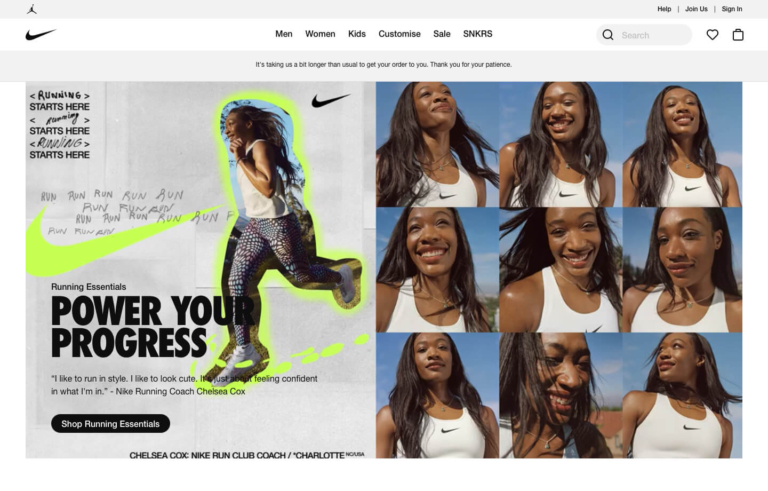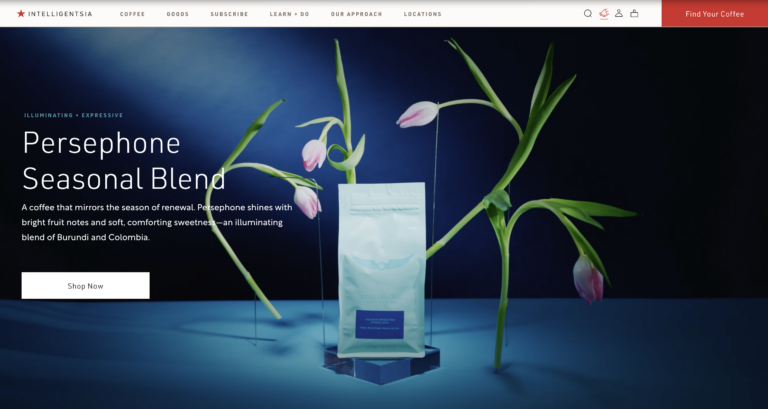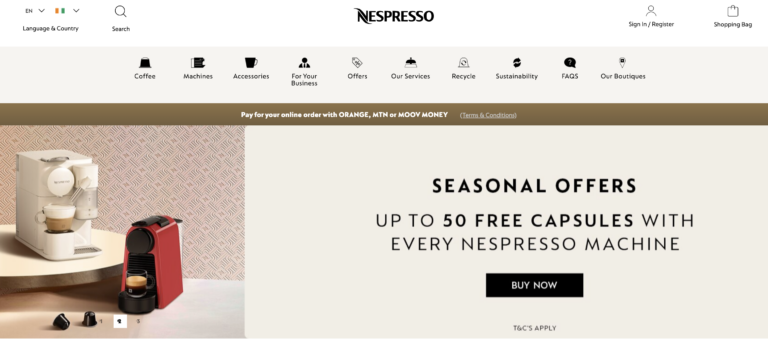Greetings! I'm Aneesh Sreedharan, CEO of 2Hats Logic Solutions. At 2Hats Logic Solutions, we are dedicated to providing technical expertise and resolving your concerns in the world of technology. Our blog page serves as a resource where we share insights and experiences, offering valuable perspectives on your queries.

Explore 5 powerful headless eCommerce success stories, including Nike, Koio, Burrow, Intelligentsia Coffee (using Magento omnichannel), and Nespresso. These brands saw dramatic improvements in speed, conversions, and customer engagement after separating their frontend experiences from their backend systems. Magento’s API capabilities make it an excellent choice for headless commerce implementations without abandoning your existing investment.
Ever found yourself browsing a super-fast online store and wondering, “How is this experience so smooth?” Or maybe you’ve been frustrated with your traditional eCommerce platform that takes forever to update and feels clunky. You’re not alone.
At 2Hats Logic helped numerous businesses transform their digital storefronts, we’ve seen firsthand how headless commerce is revolutionizing the online shopping experience.
But what exactly does “headless” look like in the real world, especially when it comes to platforms like Magento?
In this article, I’ll walk you through 5 impressive examples of brands that took the headless leap and are reaping major rewards.
What is Headless eCommerce, Anyway?
Before diving into examples, let’s quickly clarify what we mean by “headless.”
Headless eCommerce separates (or “decouples”) your frontend (what customers see) from your backend (where your product data, inventory, etc. live).
This separation gives you incredible flexibility to create custom shopping experiences across any device or touchpoint without being limited by your backend system.
Magento/Adobe Commerce and Headless: A Perfect Match
Yes, Magento can absolutely be implemented as a headless solution! In fact, Adobe Commerce (formerly Magento) offers robust API capabilities that make it an excellent backend for headless implementations.
With Magento’s GraphQL API, REST API, and PWA Studio, businesses can leverage the powerful commerce engine they trust while creating completely custom frontend experiences.
This approach combines Magento’s robust backend capabilities with the flexibility of modern frontend frameworks like React, Vue, or Angular.
Example 1: Nike – Powering Personalized Customer Experiences

Nike isn’t just an athletic wear giant; they’re a digital transformation leader that embraced headless commerce to deliver hyper-personalized experiences.
The Challenge: Nike needed to maintain consistent branding while personalizing the shopping experience for millions of customers across dozens of countries.
The Headless Solution: By implementing a headless approach, Nike created a flexible digital ecosystem that allows them to:
- Personalize product recommendations based on individual user behavior
- Deploy region-specific content without rebuilding their entire platform
- Update their frontend design without disrupting backend operations
- Integrate their mobile app, website, and in-store experiences seamlessly
The Results: Nike saw an 83% increase in mobile conversions after going headless, with page load times improving by 65%.
Transform your store with headless architecture
Example 2: Koio – Lightning-Fast Luxury Shopping
Koio, a luxury sneaker brand, demonstrates how headless commerce can transform the high-end shopping experience.

The Challenge: Koio needed a premium digital experience that matched their product quality, with lightning-fast performance to reduce bounce rates.
The Headless Solution: Koio implemented a headless architecture using:
- Shopify Plus as their commerce backend
- A custom React frontend for maximum performance
- A powerful CMS for content management
The Results:
- 4x faster page load speeds
- 28% increase in conversion rates
- 76% reduction in bounce rates
Here’s how their performance compares to industry averages:
| Metric | Industry Average | Koio (Headless) |
| Page Load Time | 4.5 seconds | 1.1 seconds |
| Conversion Rate | 2.3% | 3.8% |
| Bounce Rate | 45% | 24% |
Example 3: Burrow – Content + Commerce Integration
Burrow, the direct-to-consumer furniture company, shows how headless commerce enables seamless content and commerce integration.

The Challenge: Burrow needed to tell rich brand stories while maintaining a seamless shopping experience. This is something nearly impossible with traditional eCommerce platforms.
The Headless Solution: Burrow implemented:
- A dedicated CMS for their content team
- A separate commerce engine for product information
- A custom frontend that pulls from both systems
The Results:
- 30% increase in average order value
- 2.4x improvement in content production speed
- 60% more time spent on product pages
What makes Burrow’s implementation special is how it can create content-rich shopping experiences.
Product pages now include lifestyle imagery, detailed material explanations, customer stories, and even assembly videos, all without sacrificing performance.
Pro-Tip: When implementing headless commerce with Magento/Adobe Commerce, start by exposing your product catalog via API and building a modern frontend for your product detail pages. This focused approach gives you immediate performance benefits while allowing your team to gain experience with headless architecture.
Is your Magento store struggling with performance issues?
Example 4: Magento-Powered Omnichannel: Intelligentsia Coffee
Intelligentsia Coffee demonstrates how Magento can be transformed into a true omnichannel headless commerce solution.

The Challenge: Intelligentsia needed to unify their in-store, online, and subscription experiences while maintaining the flexibility to rapidly test new ideas.
The Headless Solution: Intelligentsia implemented:
- Magento/Adobe Commerce as their backend commerce engine
- A custom React frontend for their web experience
- PWA technologies for a mobile-first approach
- API-first architecture to connect in-store POS systems
The Results:
- 40% faster page load times compared to their previous traditional Magento implementation
- 22% increase in mobile conversions
- Unified inventory across all channels (online, in-store, and wholesale)
- Ability to launch new features in days instead of weeks
What’s particularly impressive about Intelligentsia’s implementation is how they transformed an existing Magento store into a headless solution without rebuilding from scratch. This approach allowed them to preserve their existing business logic while dramatically improving the customer experience.
Example 5: Nespresso – Scaling Globally with Local Flavor
Nespresso demonstrates how headless commerce enables global brands to scale while maintaining localized experiences.

The Challenge: Nespresso operates in over 60 countries and needed to provide locally relevant experiences while maintaining global brand consistency.
The Headless Solution: By implementing a headless architecture, Nespresso
- Maintains a single backend product catalog
- Creates region-specific frontends
- Delivers localized content, promotions, and pricing
- Enables market-specific payment methods
The Results:
- 35% faster market entry for new regions
- 25% reduction in development costs
- 47% improvement in regional conversion rates
What’s particularly impressive about Nespresso’s implementation is how they use the same product catalog to power completely different experiences across markets, from their website to their mobile app to in-store kiosks.
The Magento Headless Advantage: Flexibility Without Starting Over
One of the biggest benefits of implementing Magento ecommerce as a headless solution is that you don’t have to abandon your existing investment. Many businesses have spent years customizing their Magento backend to match their specific business requirements.
With a headless approach, you can:
- Keep your existing Magento business logic and customizations
- Gradually modernize your frontend experience
- Preserve your team’s Magento knowledge
- Gain the performance benefits of modern frontend technologies
- Create true omnichannel experiences using Magento as the central hub
Conclusion: Transform your Magento store into a headless commerce powerhouse
A headless approach helps you to significantly improve site performance, create seamless omnichannel experiences, and gain the flexibility to innovate quickly without sacrificing your existing Magento investment.
At 2HatsLogic, we’ve helped dozens of Magento merchants implement successful headless commerce solutions. Our technical expertise ensures your implementation will be successful. Contact us to start your headless journey
FAQ
Can my existing Magento store be converted to headless without starting over?
Absolutely! One of the biggest advantages of headless Magento implementations is that you can keep your existing backend while implementing a new frontend experience.
How long does it typically take to implement a headless commerce solution with Magento?
The timeline varies based on complexity, but most implementations take 3-6 months from planning to launch.
Is headless commerce only for large enterprises like the examples in this article?
Not at all! While enterprise brands were early adopters, headless commerce is increasingly accessible to mid-market businesses.
How does a headless Magento implementation impact my team's workflow?
Initially, there may be a learning curve as your team adapts to working with a decoupled frontend. However, your Magento administrators will continue to use the familiar Magento admin panel for product management, order processing, and other backend tasks.

Related Articles






